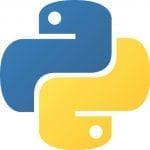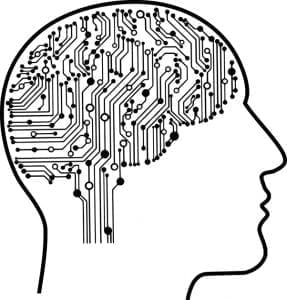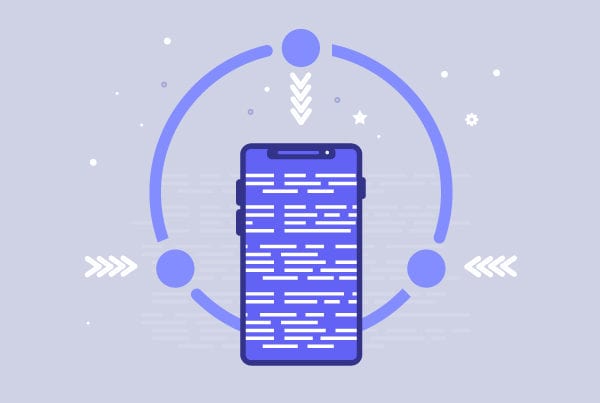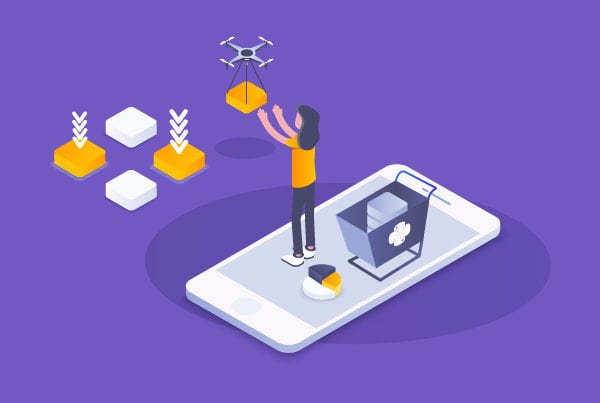Why we choose Python as a backend language
Developers have long been debating which is the best backend language. Is it Java? Swift? Maybe C++? Well, even though our programmers have a broad toolkit that prepares them to tackle even the most challenging problem, they definitely have a favorite.
Designed by Guido van Rossum, Python is a programming language that was first released back in 1991 and has been gaining traction in the industry over the last five years. With an emphasis on code readability, this open-source language is friendly and easy to use. It is also our backend language of choice and, today, we’d like to talk about why.

Python is easy to work with and easy to read
Python is known for its simple syntax and short code length. This, paired with the fact that there is also extensive documentation and tutorials available on its use, makes it fairly easy to learn. Moreover, Python is also extremely versatile and well-designed. If that wasn’t enough, Python is a platform-independent language, meaning that software created using Python can be used on a wide variety of operating systems with no need of an interpreter. All of this means that programmers can spend a lot of the time they usually devote to getting the code to run or figuring out how it works tackling the more meaningful challenges of their particular development project.

But Python doesn’t just facilitate the learning process, its readability also makes communication among programmers working on the same project smoother. This means that if a different programmer works on later additions to the code, they should have no problem understanding and working with the original code.
Python has become exceedingly popular
Although Python is deemed to be slow in comparison with other backend languages, like Java or C++, this fact has not actually slowed down its growth. As evidenced by the Institute of Electrical and Electronics Engineers (IEEE)’s ranking, Python has actually climbed its way to the top of the charts, ranking first in popularity among programming languages. Its popularity isn’t just limited to the IT industry as Python is also widely used in academic circles. Together with the ones mentioned in this article, some of the reasons cited for its popularity are the fact that Python is reliable, accessible and highly productive.

But this isn’t about just following the herd, Python’s popularity means it has a large and extremely active community, who, lucky for us, has helped build a considerable number of specialized libraries and frameworks providing extra tools to work with.
Python is great for machine learning

The fact that machine learning is revolutionizing the mobile app industry is undeniable. Because of its emphasis on code readability and its vast libraries and frameworks, Python is an ideal backend language when it comes to this area of technology. Since the language is simple and consistent, developers can write reliable systems, focusing on the issues of machine learning without having to worry about any potential headaches commonly associated with complex programming languages. Moreover, Python has a vast set of libraries specific to machine learning, such as Keras, TensorFlow and Scikit-learn. Python’s extensive set of libraries and frameworks can be extremely useful and time-saving, which translates into quicker turnover times and a more motivated and productive team. You can look at some other of Python’s machine learning libraries here.
Python is the fastest-growing major backend language

It is not only important to highlight how and why Python has become popular, the magnitude of its growth is also noteworthy. Stack Overflow has dubbed it “the fastest-growing major programming language” on more than one occasion. Python has garnered increasing traffic in Stack Overflow’s site since late 2011, as well as in their Developer Survey. Back in 2013, Python ranked 6th in popularity with just under 22% of survey takers having declared to use it. By 2017, it had finally risen to 5th place and, in 2020, it has reached 3rd place among the most loved languages for Stack Overflow users. It is also the tool most developers say they want to learn. This again translates into more available resources to work with this particular programming language.
Python has many web application frameworks
Python’s countless resources come in many forms, including a wide variety of web application frameworks. Here are just some you can choose from depending on the needs of your web app:
⦁ Django. Django is a popular open-source Python web framework built by experienced developers. It aims at using automation wherever possible to speed up web development and let software developers focus on the important work. It is fast, secure and versatile.
⦁ Flask. Flask is a Python web framework that provides various tools for developing web apps. Flask is considered a micro-framework, which means it pretty much has no dependencies to external libraries. This framework is light, flexible and easy to learn.
⦁ Bottle. As another micro web framework, Bottle is light, easy to integrate and customize, and depends solely on the Python Standard Library. Bottle is great for prototyping ideas and building simple web apps.
⦁ Tornado. Tornado is not only a web app framework but also an asynchronous library. It is ideal for developing long polling and WebSockets and has been dubbed a middle ground between Django and Flask.
⦁ CherryPy. CherryPy is a minimalistic, object-oriented web framework that works wonders for web apps. It is fast, stable and versatile.
⦁ Hug. Hug brands itself as a clean, obvious and simple framework for web development. It was built with performance in mind and includes built-in version management as well as automatic documentation.
Final thoughts
While there are plenty of backend languages out there, many of which are very popular, productive, and useful, Python has definitely won us over. It makes our day-to-day work easier and more enjoyable, allowing us to focus on the real issues and helping us deliver outstanding products to our clients. Python is continuously working on new versions, with the latest to date (3.9.0) released on October 5th 2020, and we are looking forward to seeing Python continue to grow over the next few years.





